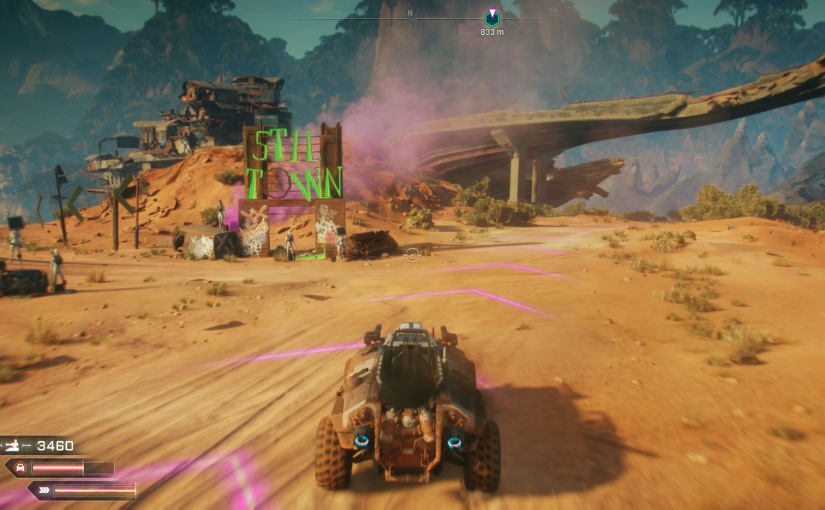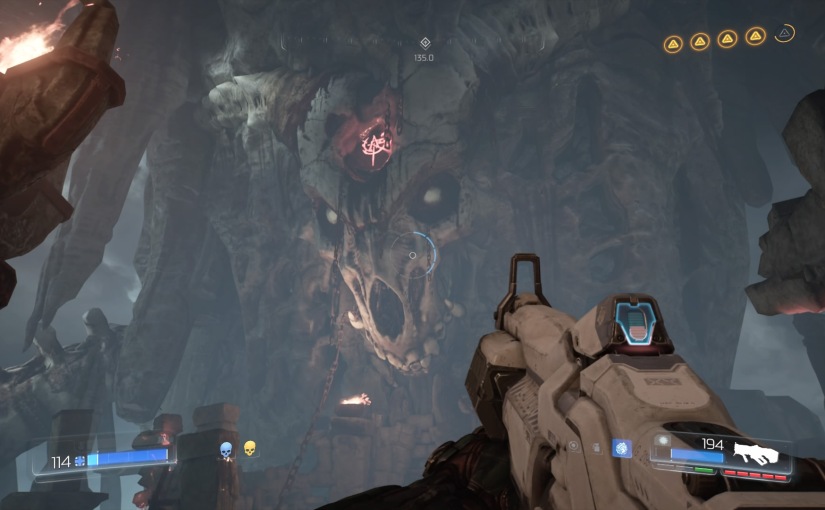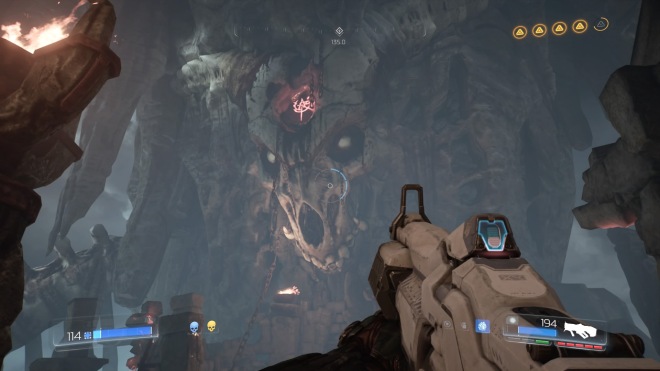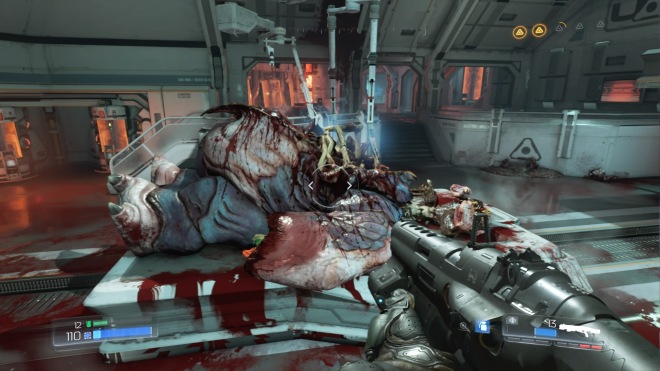The announcement that the first Rage would be getting a sequel was quite a surprise. Not because it was a bad game, the gameplay was excellent, but because beyond that, it was painfully vanilla. This led many to forget it was something that ever existed, and I’d just assumed that was the same for id Software. Honestly, if I close my eyes and try to imagine Rage, all I see is a bucket load of sand, dilapidated buildings and that little three-pronged Frisbee they pushed as a USP. And yet, here we are. Rage 2 is out now, and this time around it’s made a concentrated effort to be remembered, with mixed results.
Taking place after the first game, Rage’s wasteland has had something of a makeover. Apparently, in the last 30 years, everyone discovered masses of hair dye and spray paint. Rage 2’s world is much more colourful, with bright pinks, greens and blues cheering up the place. Whether that’s graffiti on previously drab buildings or atop the many punk haircuts people sport, it immediately gives everything a lot more character than its predecessor.
The tone has seen a bit of shift too. Perhaps inspired slightly by Borderlands, Rage 2 has a more quirky tone, with humour that the first game was severely lacking. There are even characters here you may remember in a few years. Admittedly not that many, but there are still some, which is an improvement from zero. A majority of the NPCs living in the settlements are completely forgettable and uninteresting, so you’ll find yourself ignoring them in the end.
However, there are some good characters, like Dr Kvasir, who was actually in the first game. This time around, however, his mad scientist demeanour provides some funny moments. His design is infinitely more intriguing too. In the original, he donned a fairly bland outfit, but now, he’s perched on top of a mutant that carries him everywhere. Its name is Legs, and its mouth moves in sync with the doctors, which is delightfully creepy.
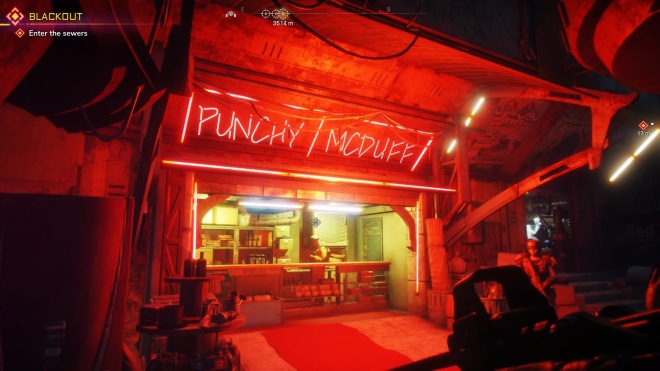
That being said, this added effort to have a little more personality doesn’t stop the story from being a complete non-event. The setup is pretty much this; you are the last Ranger, an advanced type of soldier, who is tasked with stopping Dr Martin Cross, who was also apparently in the original. To do this, you have to do a few missions for three other returning characters, so they’ll help you stop him. And that’s pretty much it. It’s about as short as it sounds with only nine missions total, which is bizarre for an open-world game, but given its predecessors narrative, that’s probably for the best.
Instead, id Software decided to double down on where they excelled in the first game, the combat. If you enjoyed Doom (2016’s) shooting mechanics, you’ll quickly become enamoured with what Rage 2’s cooking. Every gun feels so satisfying to use, whether that’s the weighty assault rifle or the more spicy weapons such as the rail gun, which feels like it’s slinging actual train carriages. It may come as no surprise, however, that the shotgun steals the show.
id Software has always known how to do shotguns, and Rage 2 keeps up this glorious tradition. It fires in a wonderful bass tone that makes it sound obscenely powerful. There’s almost something compulsive to it. I would often switch to another weapon and find myself itching to swap back. If that mutant or wastelander stood within shotgun range, I wouldn’t dare use anything else.
Stacked on top of this, you also have a few abilities at your disposal. Some of these are pretty forgettable, like a shield you can throw down to stop the incoming fire, which seems far too passive for this game. There are also smaller powers that add greatly to the movement of the game, such as short-range dashes to dodge enemy rockets or even faster sprint speed that gets ludicrously quick. These both add to the frenetic nature of the combat, but they’re not the stars of the show.
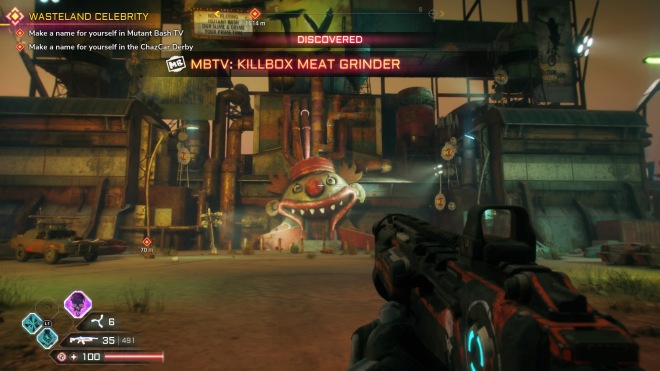
The powers that truly shine are Slam, Shatter and Overdrive. Overdrive is what it says on the tin. The screen gains a flickering pink tint for a bit, amping up the power of your guns. That’s right! It’s possible to make the shotgun even more incredible for a brief time. It has a somewhat different effect for each weapon, but all you need to know is they’ve got plenty more kick.
On the flip side, Slam and Shatter aren’t simply beautifully stylised buffs like Overdrive. They’re a destructive beast in their own right. Shatter is essentially force push but more lethal. Not only does it send enemies flying into each other. It also destroys any armour they may have foolishly assumed would defend them. Shatter is somewhat similar in that it can send folks flying, except it takes the more flamboyant form of a devastating ground pound that can kill enemies with its seismic force.
Neither of these things is particularly new, but they’re designed to feel as strong as possible to provide the power fantasy Rage 2 wants you to experience. They’re both accompanied by a touch of slow motion and this almost otherworldly sounding blast. Slam will toss up a few rocks for good measure too, so you feel like you’ve also moved the ground itself.
There’s also car combat in Rage 2, and whilst it’s not as good as the regular shooting, it’s still good fun. Rage 2 is a collaborative effort between id and Avalanche, the folks who made Just Cause and, more importantly for this discussion, Mad Max (2015). If you’ve ever played Mad Max, then you’ll know that it has excellent car combat.
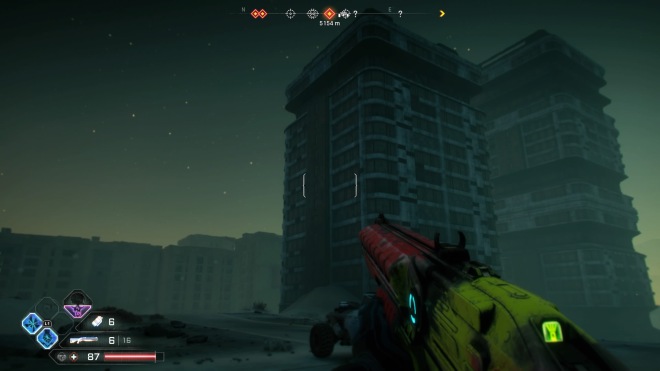
It’s not quite as good in Rage 2. There’s no harpoon for starters, but unloading rockets into other vehicles and ramming them at high speed is still enjoyable and watching them swerve off the road and explode in a big old fireball never ceases to be a good thing. However, the world feels quite sparsely populated, so you won’t be doing as much of this as you might like.
Unfortunately, even though the combat is excellent, it’s often hampered by the open-world setting. The side-missions, which make up the bulk of the content, are very straightforward. It is always a case of go here and kill these people or destroy specific objects type stuff. The joy of killing enemies never fades, but the lull in between really kills the momentum that makes the game enjoyable.
You’ll turn up at an enemy camp, quickly obliterate them because you’re so powerful and then drive to the next without seeing another soul en route. Only seeing enemies in great numbers in these settlements not only makes the world feel quite empty, it almost makes it weird to design it in this manner. Especially since it mostly means that it keeps you away from shooting people in the face, which is all you want to be doing.
The progression is also less than ideal. Most players will probably assume that you’ll amass your arsenal of guns and powers as you play through the story. This is surprisingly not true for Rage 2. All of these goodies are located in arks, and you’ll only run into a few of them by following the story. The rest you’ll have to hunt for. You do get the shotgun through the story, though. This may not matter all that much to everyone then since it is all you need. If it does, just remember to do a little exploring before ploughing through the story.
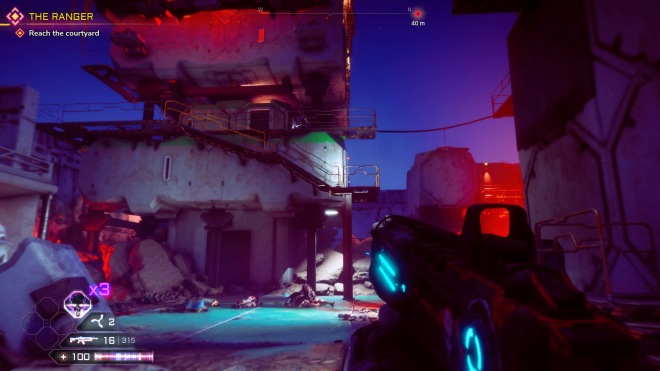
There are also a few minor niggles beyond this that don’t hugely detract from what Rage 2 does so well but are irksome nonetheless. The menu on PS4 and Xbox One has some delay issues, making navigating it a little cumbersome. There’s a lot to do within the menu itself, including several pages for upgrading weapons, powers and projects.
Herein lies another minor gripe. There are so many different things to find that essentially upgrade items. You get project tokens for clearing out bandit camps which can then be used to buy skills. Then there are separate weapon and nanotrite (your abilities) upgrades. But upgrading either also involves the use of feltrite, a material found in pink lidded chests or on fallen meteorites.
It works differently in both cases, which makes it needlessly confusing. With weapons, you must spend a certain amount of feltrite before buying an upgrade using your weapon mod. Your abilities, on the other hand, can be upgraded normally only using nanotrite mods. But they do have passive effects that you need feltrite to upgrade. It’s not overly difficult to figure out. It just feels a tad convoluted.
Rage 2 has made an effort to be more memorable than its predecessor, and combat-wise it’s certainly done that, improving on the originals already excellent gun-play. Elsewhere it has mixed results. The punk aesthetic certainly gives it a more distinctive look, but the world still feels empty, and the open-world structure only exacerbates this. The switch to a more quirky, Borderlands-like humour has its moments, but there simply aren’t enough good characters to notice it that much, and the story remains lacklustre. But if you’re just looking purely for an excellent combat (shotgun) mechanics, then Rage 2 has you covered.
7/10
